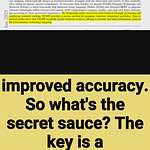A simple prompt-based solution to make hallucination detection work across all domains
https://arxiv.org/abs/2411.04847v1
🎯 Original Problem:
LLMs often generate hallucinations - responses that sound logical but are factually wrong. Current supervised hallucination detectors work well only for specific domains and struggle to generalize across different domains. Building detectors that work across domains requires extensive new training data.
-----
🔧 Solution in this Paper:
→ PRISM framework uses carefully crafted prompts to guide LLM's internal states, making truthfulness-related patterns more prominent and consistent across domains
→ It first constructs prompt templates for hallucination detection, then uses LLMs to generate multiple variations
→ Selects best prompts by calculating variance ratios on labeled datasets
→ Combines chosen prompts with text to get enhanced internal states as features
→ Uses these features to train better hallucination detectors
-----
💡 Key Insights:
→ Appropriate prompts can significantly improve how LLMs internally represent truthfulness
→ The structure of truthfulness becomes more consistent across different domains with guided prompts
→ Simple prompt engineering can enhance cross-domain performance without extra training data
-----
📊 Results:
→ PRISM-SAPLMA achieved 77.35% accuracy on cross-domain detection using LLaMA2-7B-Chat
→ Improved to 79.87% accuracy with LLaMA2-13B-Chat
→ Consistently outperformed baseline methods across all test domains










